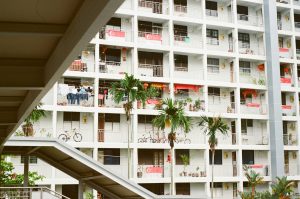Demand for green buildings shapes construction trends
As climate change continues to be a pressing global issue, the construction industry is facing increasing pressure to incorporate sustainable practices in building design and construction. One major trend that has emerged in recent years is the demand for green buildings, which prioritize environmental sustainability. This shift in consumer and industry demand has had a significant impact on the construction industry as companies strive to meet the demand for greener and more sustainable buildings. In this article, we will explore how the demand for green buildings is shaping construction trends and what this means for the future of the industry.
The Rise of Green Buildings
Green buildings, also known as sustainable buildings or high-performance buildings, are designed and constructed using environmentally responsible practices. This includes utilizing energy-efficient materials, implementing renewable energy sources, and minimizing the building’s impact on the environment. Green buildings also prioritize the health and well-being of occupants by providing a healthy and comfortable indoor environment.
The demand for green buildings has been steadily increasing in recent years, driven by a combination of factors. One of the main reasons for this trend is the growing awareness of the impact of buildings on the environment. According to the U.S. Environmental Protection Agency, buildings account for 39% of total energy use and 38% of carbon dioxide emissions in the United States. This means that buildings have a significant impact on global warming and climate change.
Additionally, governments and international organizations have been implementing stricter regulations and guidelines to reduce the environmental impact of buildings. For example, the European Union has set a target for all new buildings to be nearly zero-energy by 2020, while the United States Green Building Council has developed the Leadership in Energy and Environmental Design (LEED) certification program to encourage sustainable building practices.
The Impact on Construction Trends
The rising demand for green buildings has had a significant impact on the construction industry, shaping many current and future trends. One of the most notable impacts is the increased use of sustainable building materials. Traditional building materials, such as concrete and steel, have a significant environmental impact due to their high carbon footprint. In response, construction companies are turning to alternative materials such as Cross-Laminated Timber (CLT), which has a lower carbon footprint and offers many other benefits, such as improved thermal performance and faster construction times.
Another trend that has emerged as a result of the demand for green buildings is the integration of renewable energy sources into building design. Buildings are one of the biggest consumers of energy, so incorporating renewable energy such as solar panels or wind turbines can significantly reduce their environmental impact. Many companies are also implementing energy-efficient systems, such as smart lighting and HVAC systems, to further reduce energy consumption and improve building performance.
The demand for green buildings has also had a significant influence on the design and construction process. Building information modeling (BIM) is becoming increasingly popular in the industry as it allows for the integration of sustainable practices into building design and construction. BIM enables more efficient collaboration between architects, designers, and contractors, resulting in more accurate and sustainable building designs.
The Future of the Industry
The demand for green buildings is expected to continue shaping the construction industry in the coming years. As governments and organizations continue to implement stricter regulations and policies, companies will be forced to adapt to keep up with the market demand for sustainable buildings. The adoption of greener practices and the use of sustainable materials will become standard in the industry, and those who fail to do so may fall behind their competitors.
Furthermore, advancements in technology and research will likely lead to the development of new and innovative sustainability solutions for buildings. For example, the use of artificial intelligence to optimize building energy consumption or the integration of vertical farming systems into building designs for sustainable food production.
Conclusion
In conclusion, the demand for green buildings is significantly shaping construction trends and pushing the industry towards a more sustainable future. Green buildings not only have a positive impact on the environment, but they also offer numerous economic and social benefits such as reduced energy costs, improved health and well-being of occupants, and increased property value. As the demand for green buildings continues to grow, construction companies must adapt to meet this demand and work towards creating a more sustainable built environment.










